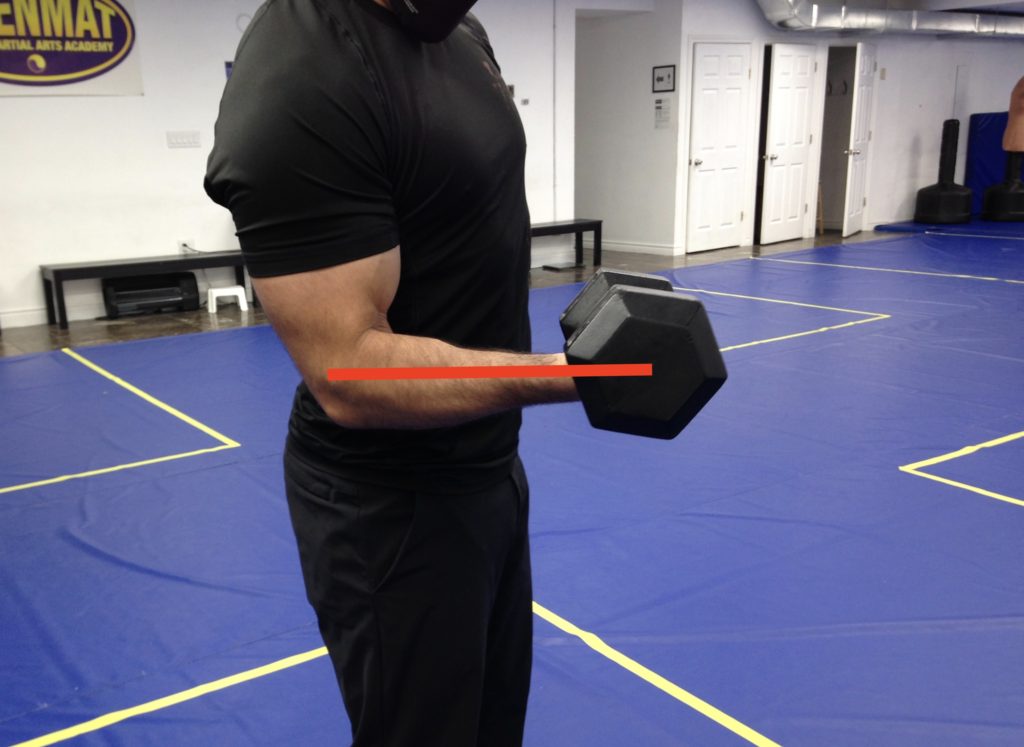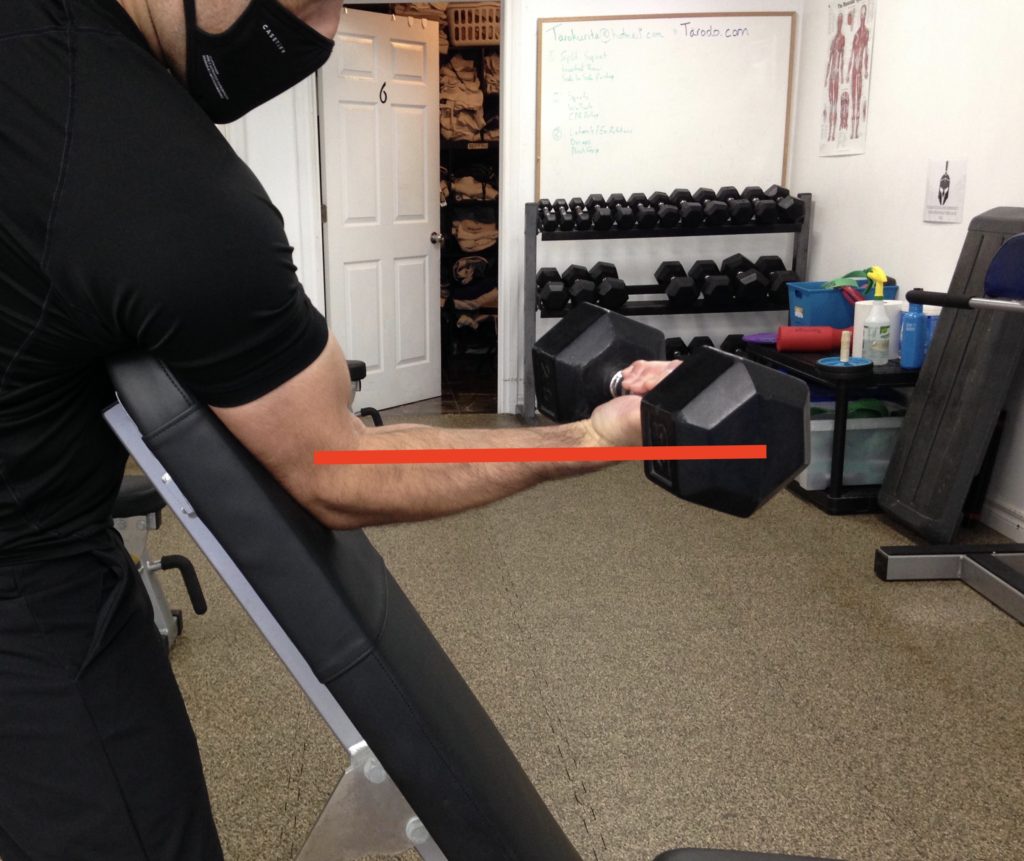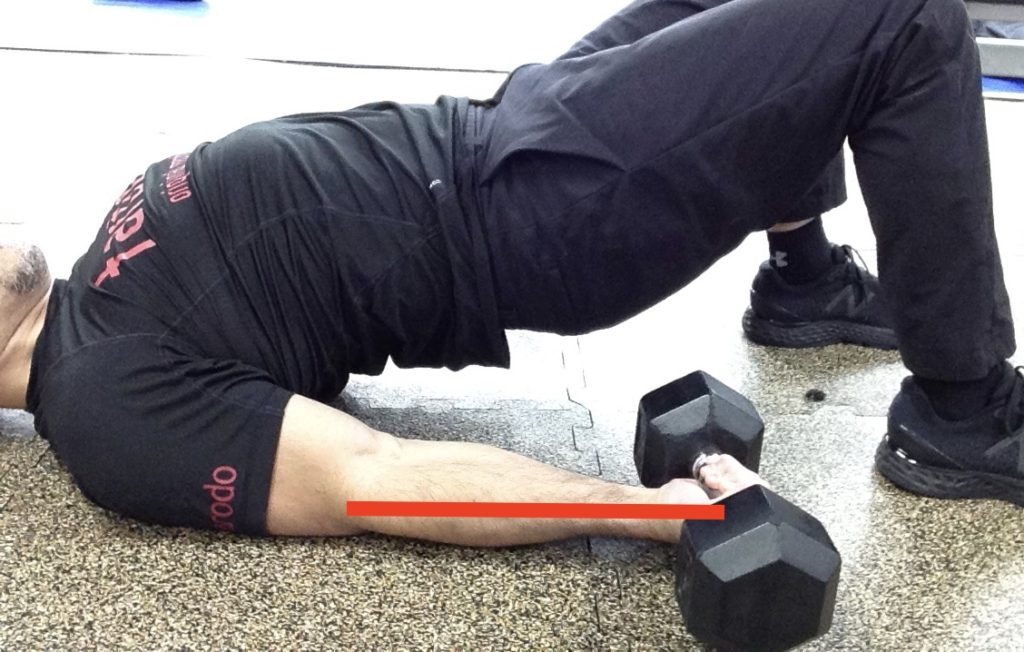The Victory Vein
When it comes to building muscle the odds are against me; I have many limitations and few advantages. What I have built is the result of relentless determination. This path has brought casualties; innumerable strains, tears and syndromes. To follow my methods requires the ability to tolerate risk but therein lies the victory.
On biceps, I have always aspired to having a prominent cephalic vein. The Vein is a symbol of physical potency. For most of my muscle obsessed life, I have tried valiantly to get a least a trace of vascularity. Unfortunately, existing knowledge and pure force of will were futile:
Barbell curls: No Vein!
Dumbbell curls: No Vein!
High reps: No Vein!
Low reps: No Vein!
Gain weight: No Vein!
Lose weight: No Vein!
A workout casualty pointed the way to the first breakthrough. I strained my right Biceps long head. The increased sensitivity helped me define its function. I could distinctly feel where it stretched and what exact movements brought pain. Anatomically, the long head lies underneath the biccipital Vein. Its development presses the Vein against the underside of the skin.
Breakthrough number two emerged when I combined function with physics. Classic exercises expose the biceps to peak torque when the muscle fibres are (roughly) at mid length. The exercise I adopted exposes the Biceps long head to peak torque when its fibres are near full length.



The V Curl seems ludicrous. However, dismiss it to your own demise. This exercise places exceptional stress on the Biceps. So much stress that if you don’t know what you are doing expect a strain or a tear. Heed the following:
1. Target HIGH reps. This exercise features a brief exposure to very high tension. This commands lighter weights and much higher reps. I keep my reps between 15 and 30 the majority of the time. Lower reps (6-10) work but the heavier weights carry a significantly higher risk of injury.
2. LIMIT your exposure. Cycle between exercises that feature peak torque at (relatively) long muscle fibre length and exercises that feature peak torque at (relatively) short muscle fibre length. The specific ratio is highly dependent on your ability to tolerate the exercise. My personal threshold dictates a ratio of four weeks long to eight weeks short. Standing Biceps curls and preacher curls are good ‘short’ length exercises.
3. MASTER technique. The turnaround between the eccentric portion of the repetition and the concentric portion must be slow and controlled! Ultimately you want to achieve a smooth, continuous tempo which limits time outside of the high tension portion of the repetition. Absolutely no pausing!
Everybody wants to know the magic loading pattern. Forget fancy set and rep schemes with this exercise as tissue health and intestinal fortitude are always the limiting factors. As mentioned earlier the vast majority of time should be spent targeting 15 to 30 repetitions (since every set is taken to failure and I don’t change the weight, fatigue will cause reps to fall below 15 – only the first set needs to be 15 or higher). If I hit 30 reps on my first set and tissue quality is good I’ll finish the workout and increase the load next time. Most often I target six sets per workout. Workouts are spaced two to seven days apart depending on tissue readiness.
An average arm workout appears below:
Exercises that appear within the same block are alternated.
BLOCK ONE
Dips 10 reps x 6 sets
V Curls 15 – 30 x 6 (each set to failure)
Rest intervals: drop from 120 seconds (between initial sets) to 20 seconds (between later sets)
BLOCK TWO
Decline E-Z bar triceps extensions 10 x 3
Supinating Dumbbell Preacher Curls 10 x 3
Rest intervals 60 – 90 seconds
BLOCK THREE
Pronated wrist curls 30 x 3
Rest intervals 60 seconds
Soreness is a valid indicator of workout effectiveness. It indicates the muscle was successfully targeted and novel levels of tissue stress were achieved. Enjoy the pain!
To varying degrees the odds are against us all. What matters most is what you do to defy them.
